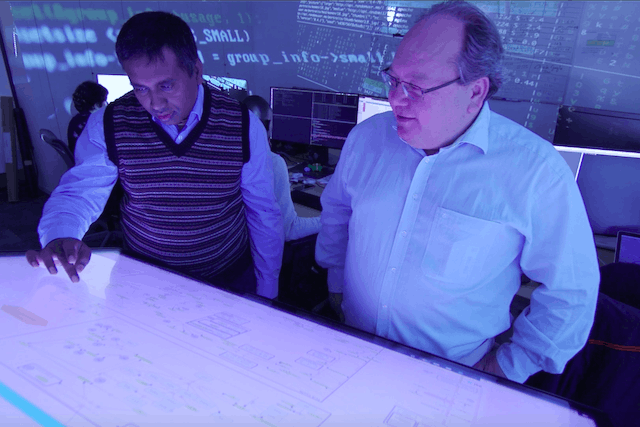When I meet with Dr Reinhard Schneider, who heads the bioinformatics core at the University of Luxembourg, he walks me through a Parkinson’s disease mapping tool.
“We’d like to collect knowledge about all the proteins and genes ever mentioned with Parkinson’s,” Schneider tells me.
The tool shows not just the biological connections and mechanisms, but it also links to other databases with more information, including related publications. Layers can be removed or added, depending on the type of research a user wants to yield. “Everything entering this map is hand-curated, there’s always a human behind it.”
Parkinson’s is the second most prevalent neurogenerative disease globally, but Schneider and his team are interested in what impacts the onset. “Over time with Parkinson’s, there might be 30 to 40 years of onset, so it takes a long [time] until you see an effect,” Schneider explains. “The problem in Parkinson’s is you have a few mechanisms and, according to the cell type, you get different diseases.”

A screenshot of the LCSB Parkinson's Disease Map
But the tool isn’t just designed to harvest data. “We’re also working on sensors in shoes, where you measure the gait behaviour,” Schneider says. Unfortunately, those with Parkinson’s can have balance issues and even “freeze” while walking, making them susceptible to falling which could lead to other complications. Schneider explains that before that freezing state, the gait pattern changes, and sensors could help alert the walker in advance.
Curating data
Schneider--who additionally heads the Luxembourgish node of Elixir, a European infrastructure uniting life science organisations to safeguard data and software, hosted through the Luxembourg Centre for Systems Biomedicine—and his team are juggling a range of projects, four of which fall under Horizon 2020 funding, 3 through the Innovative Medicines Initiative (IMI).
Smart4Health (S4H) is a consortium which aims to allow every EU citizen to be able to access his or her personal health data through a mobile application. The software would also allow users to donate their health-related data, meaning the data could feed back into more research which could lead to better quality of life--including for those with rare diseases, like Parkinson’s.
Through Elixir, he says, “We do software developments between the nodes on certain implementations…we do training, but our main focus is to get translational medicine data hosted in a way that scientists worldwide can access them.”
Privacy, harmonisation challenges
But there are a wide range of challenges when it comes to managing data. One is maintaining data when funding runs out—Schneider says in some cases, even hundreds of terabytes can be lost. There’s also the challenge of harmonising data—for example, how gender is recorded, how blood is collected, etc. In S4H, “we are in the process of defining what data will come from this ‘Gesundheitscloud’ [health cloud] …it’s difficult because you have different studies behind them, different collected data types, you have to do a lot of cleansing and curation at the beginning.”
There are also challenges harmonising time series—were glucose levels measured in the morning or evening, for example? Several times over the course of a day?
But of course, there are also privacy and legal concerns. “We had to look early on into the GDPR, and that was a pain but we developed software which allows us to collect all the metadata, keep track of who has access to the data, how long we store the data,” he says. For an IMI project, there might be over 50 partners—half of which are pharma—and paperwork might have to go through each legal department. “And because our side is often the data host, collecting the data, we are in the middle of that turmoil.”
Privacy being a main concern in health tech, there are also multiple layers to this when it comes to accessing the data: “We have totally free data, data where you have to apply as a scientist, then data where an access committee is behind it and you might have to provide the project description of what you would like to do with the data [before] getting access to it.”
Given that people with similar genetic backgrounds can also be identified, “we are also working on mechanisms so you only get access to one piece of the genome”.
Ultimately Schneider and his team have their work cut out for them, but he believes that it is well worth it—not just for those with rare diseases, but for anyone to get older in a healthier way. He talks about “Team Luxembourg” and how the research institutions “really try to work together. There’s a movement and openness. We know if we put our stuff together, we can do more than working alone.”
